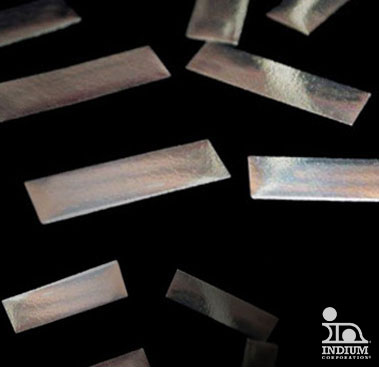Related Flux-Coated Preforms Blog Articles
Back to the Basics: Flux
Flux is a compound that, when heated, helps remove oxides off solderable surfaces, which is critical in allowing them to bond to each other. As almost every metal and alloy will grow an oxide layer over time, flux is one of the most important materials if you are soldering by-hand or in a reflow oven. Because of this, many people want to know: what type of flux should we be using? Read more to find out!
Read MoreBreakdown of SIR Standards
SIR Testing-Surface and Insulation Resistance testing, a form of standard testing where you measure the electrical reliability of a no-clean or a water-soluble flux residue, has existed for a while now.
Read MoreViscosity Versus Tack
Viscosity and tack are two important material properties that define a flux. People often “tack” them together as one, thinking they go hand-in-hand. Typically, this is the case, but not always. This blog discusses the differences between these properties.
Read MoreSpecifying Flux for Pure Indium Preforms
Jim Hisert enlists Meagan Sloan, Technical Support Engineer to recommend a flux for his indium preform application.
Read MoreNot all fluxes and solder pastes are created equal!
The different flux and solder paste formulations mean that some products will have different material lifetimes than others. Understanding the lifetimes and following manufacturers recommendations can help to ensure you get the optimum performance from the material.
Read MoreFeatures & Benefits
Flux Coatings for Preforms are available in no-clean and rosin-based chemistries with a variety of activity levels to suit your substrate metallizations.
Flux Coatings
Indium Corporation offers multiple unique flux coating processes with the ability to control the amount of flux to tight tolerances. Flux coatings are measured and applied by weight percentage, often ranging from 1-3%. Coatings can be applied to most shapes and sizes of preforms, and can also be offered on solder ribbon and on InFORMS®.
Using Flux-Coated Preforms in Soldering
For certain soldering applications, flux-coated preforms may offer the greatest number of benefits over other more conventional forms of solder. For applications other than active device manufacture, flux can be incorporated as an integral part of the preform design to meet customer needs for the precise amounts of flux, easy automation, and elimination of costly separate flux applications.
In general, fluxes should be avoided in active device assembly due to the difficulty in removing the flux residue after soldering. If care is taken to ensure the joining surfaces and the preforms are thoroughly clean, and if a reducing atmosphere at 350°C is used, flux coating is usually not necessary.
Flux coated Indalloy® soft solder preforms eliminate the necessity of manually applying external liquid fluxes in operations such as vapor phase soldering of back-plane wiring assemblies and capacitor manufacture. Flux-coated preforms are manufactured with the exact amount of flux required for the specific application, providing a high degree of consistency from one bond to another. Flux percentages can be specified between 0.5% and 3% by weight with a tolerance of ±0.5%. The most popular percentage being 1.0% by weight.
Indalloy® flux types are available in non-activated pure gum rosin (type R), mildly activated rosin (type RMA) and fully activated rosin (type RA). RMA fluxes have a small but highly effective amount of an activator added to increase fluxing action over the R type. RA fluxes contain a small amount of an amine hydrochloride activator that provides superior fluxing action, as compared to R and RMA type fluxes. RA flux finds use in soldering assemblies where a high degree of fluxing action is desired, e.g. soldering to tarnished copper or nickel plate. RSA, an enhanced version, is also available for preform coating. This flux is the strongest of the rosin types. NC-7 flux is a specially formulated RMA type flux that, along with the R type flux, leaves nonconductive and non-corrosive residue that can safely be left on an assembly without fear of corrosion. However, for aesthetic or visual inspection purposes, the flux residue can be removed using a bipolar solvent to remove both the rosin portion and the ionizable activator portion of the flux. This is most often accomplished using vapor degreasing equipment.
Summary
In summary, the use of Indalloy® flux-coated preforms can result in the following advantages:
- All fluxes used to coat preforms, when reflowed using a standard Sn63 profile, pass SIR tests.
- The precise amount of flux and alloy are delivered to the solder joint.
- The costly production step of separate fluxing is eliminated.
- Bonding is faster because the flux is positioned where it is required, next to the surfaces to be joined, unlike the case with flux-filled preforms.
- Because less flux is used, post solder cleaning is easier.
- The flux quantity is uniform in thickness and consistent in amount from piece to piece.
- The dull, flux-coated surface is ideal for IR reflow.
- Since the flux on flux-coated preforms contains no solvent, voiding is typically less than when manually applying liquid flux to uncoated preforms.
Flux-Coated Preforms
| Flux | IPC Classification | Substrate Finishes | Reliability J-STD-004 |
|---|---|---|---|
| LV299 | ROL1 | Au, Ag, Pd, Pt, Cu, Ni, HASL, ENIG, Sn | Pass |
| LV2K | ROL0 | Au, Ag, Pd, Pt, Cu, HASL, ENIG, Sn | Pass |
| NC-10HF | ROL0 | Au, Ag, Pd, Pt, Cu, Ni, HASL, ENIG, Sn | Pass |
| NC-7 | ROL0 | Au, Ag, Pd, Pt, Cu, HASL, ENIG, Sn | Pass |
| NC-299 | ROL1 | Au, Ag, Pd, Pt, Cu, Ni, HASL, ENIG, Sn | Pass |
| RA-2 | ROL1 | Au, Ag, Pd, Pt, Cu, Ni, HASL, ENIG, Sn | Pass |
| RA-42 | ROH1 | Cu, Ni, Cu Alloys (Brass, Bronze), Alloy 42 | Cleaning Recommended |
| RSA | ROM1 | Cu, Ni, Cu Alloys (Brass, Bronze) | Cleaning Recommended |


